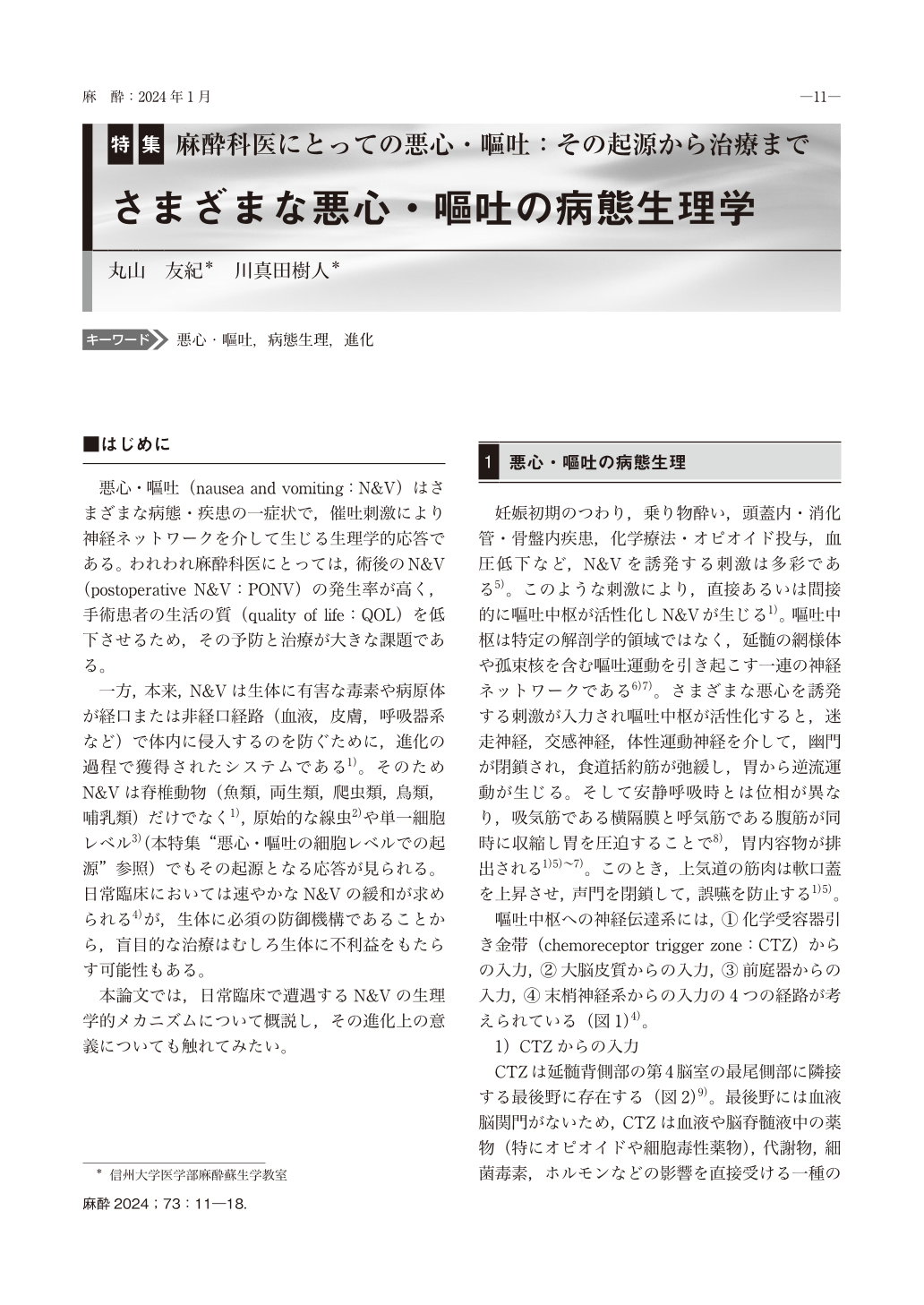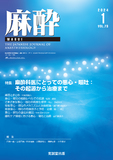Japanese
English
- 有料閲覧
- Abstract 文献概要
- 1ページ目 Look Inside
- 参考文献 Reference
はじめに
悪心・嘔吐(nausea and vomiting:N&V)はさまざまな病態・疾患の一症状で,催吐刺激により神経ネットワークを介して生じる生理学的応答である。われわれ麻酔科医にとっては,術後のN&V(postoperative N&V:PONV)の発生率が高く,手術患者の生活の質(quality of life:QOL)を低下させるため,その予防と治療が大きな課題である。
一方,本来,N&Vは生体に有害な毒素や病原体が経口または非経口経路(血液,皮膚,呼吸器系など)で体内に侵入するのを防ぐために,進化の過程で獲得されたシステムである1)。そのためN&Vは脊椎動物(魚類,両生類,爬虫類,鳥類,哺乳類)だけでなく1),原始的な線虫2)や単一細胞レベル3)(本特集 “悪心・嘔吐の細胞レベルでの起源” 参照)でもその起源となる応答が見られる。日常臨床においては速やかなN&Vの緩和が求められる4)が,生体に必須の防御機構であることから,盲目的な治療はむしろ生体に不利益をもたらす可能性もある。
本論文では,日常臨床で遭遇するN&Vの生理学的メカニズムについて概説し,その進化上の意義についても触れてみたい。
Nausea and vomiting(NV)are induced by a variety of emetic stimuli through the central and peripheral nervous systems. They are also important signs of various diseases of the intracranial organs, the gastrointestinal tract, and the pelvic organs. Since the NV response occurs in many species including most vertebrates(fish, amphibians, reptiles, birds, and mammals), nausea and vomiting are also considered an evolutionarily acquired defense system when toxins, dangerous drugs, and pathogens enter the body via enteral or parenteral routes(blood, skin, respiratory system, etc.). NV is seen in many different situations including pregnancy, motion sickness, postoperative NV, and chemotherapy-induced NV. Since the pathophysiology of NV differs among these situations, the treatment of NV should be performed based on the mechanisms underlying each situation. This article reviews various mechanisms of the NV that is encountered in clinical settings and discusses their evolutionary significance.

Copyright © 2024 KOKUSEIDO CO., LTD. All Rights Reserved.


